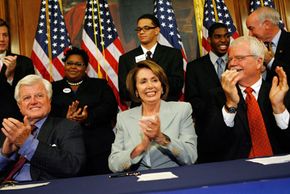On television, college life is a season of romance, sororities and parties, with a few classes thrown in for good measure. Maybe college really works that way for some people. But in reality, most college students have to worry about paying for classes, books, food, and rent. They have to work jobs, study to keep their grades up, and show up for classes on time. It can be very stressful -- definitely not the carefree life of the TV college student.
Not surprisingly, many people put off college or quit altogether because money gets too tight. So, the federal government, in an effort to encourage higher education, offers the Federal Pell Grant. Pell Grants are awarded to undergraduate students based on need; the amount of money a student can receive is directly related to the student's financial status, the number of classes a student is enrolled in and the costs of the school he or she attends.
Advertisement
Because Pell Grants are need-based aid, applicants must prove their income is low enough to receive the funds. This discourages many people from even applying, but the application takes into account the number of students in a household who are enrolled in college, as well as other factors. So it's definitely worth applying for a Pell Grant if you're interested in attending college.
In this article, we'll explore the steps to apply for a Pell Grant, the rules for spending the money, and how Pell Grants are distributed. We'll also find out how easy -- or hard -- it can be to get a Pell Grant to help put you through college.
One of the most important things to understand is how to determine your eligibility. Read on to learn more about the eligibility formula and how you can prove your eligibility for a Pell Grant.
Advertisement



